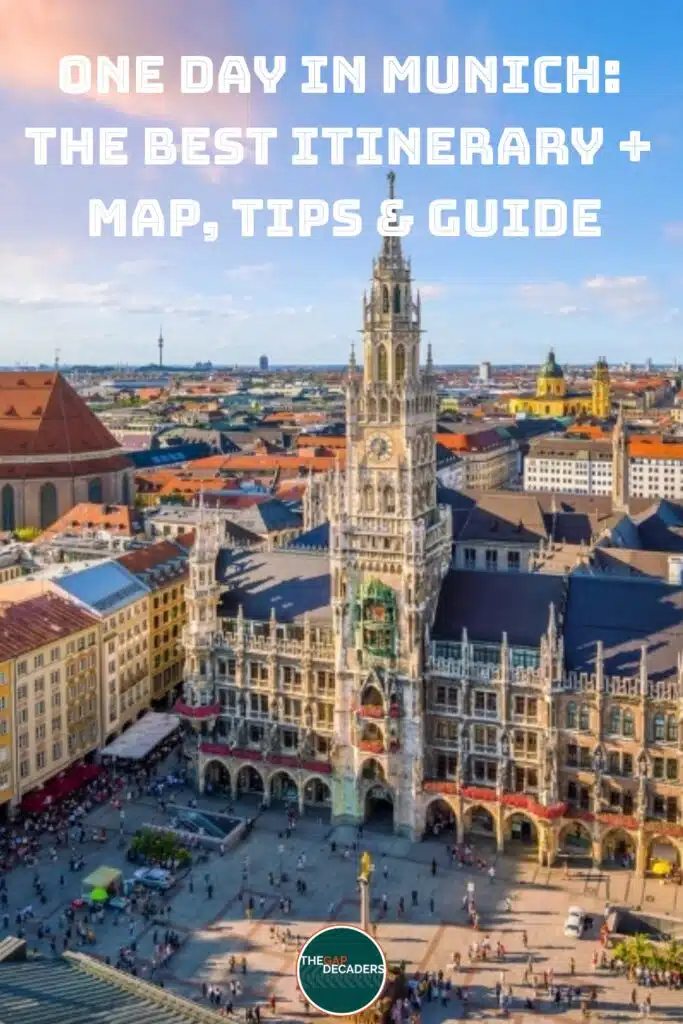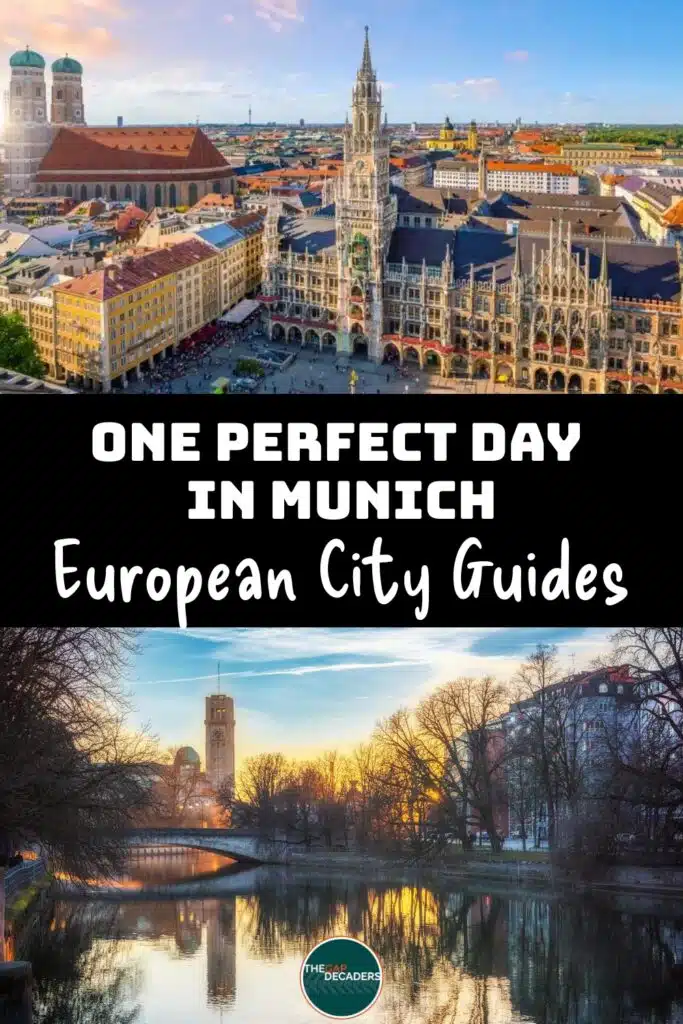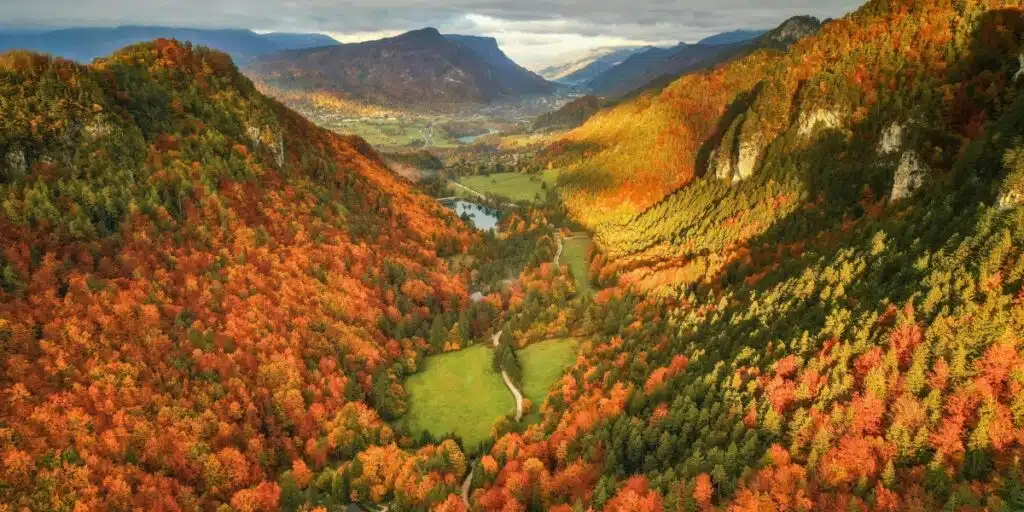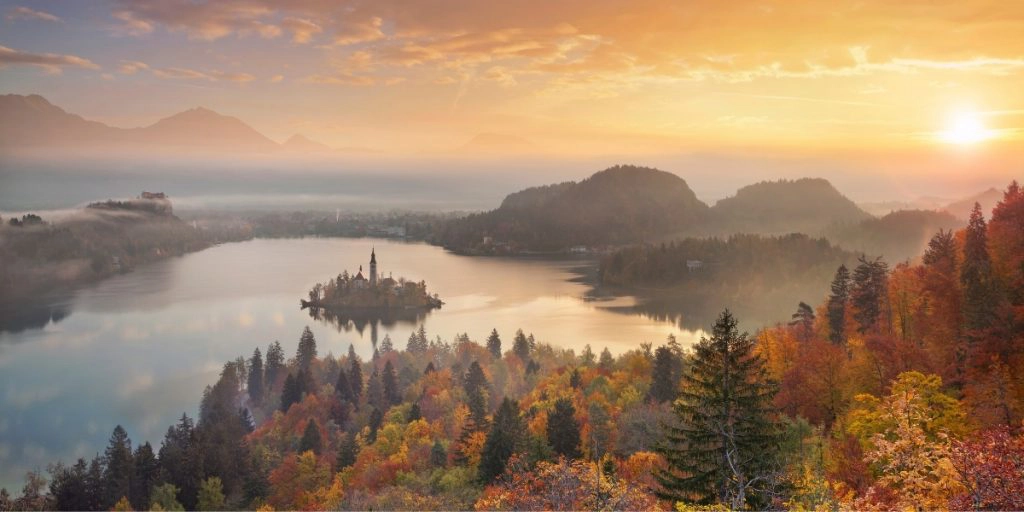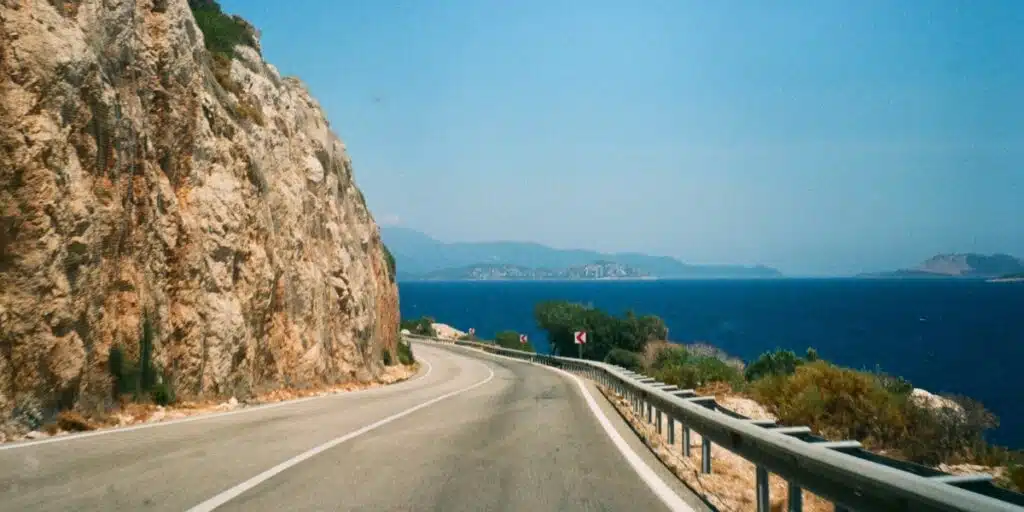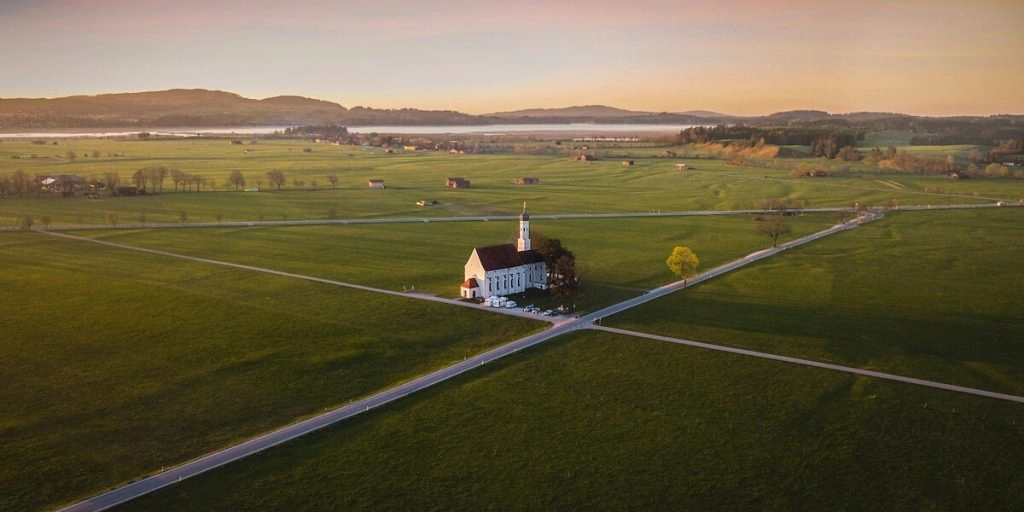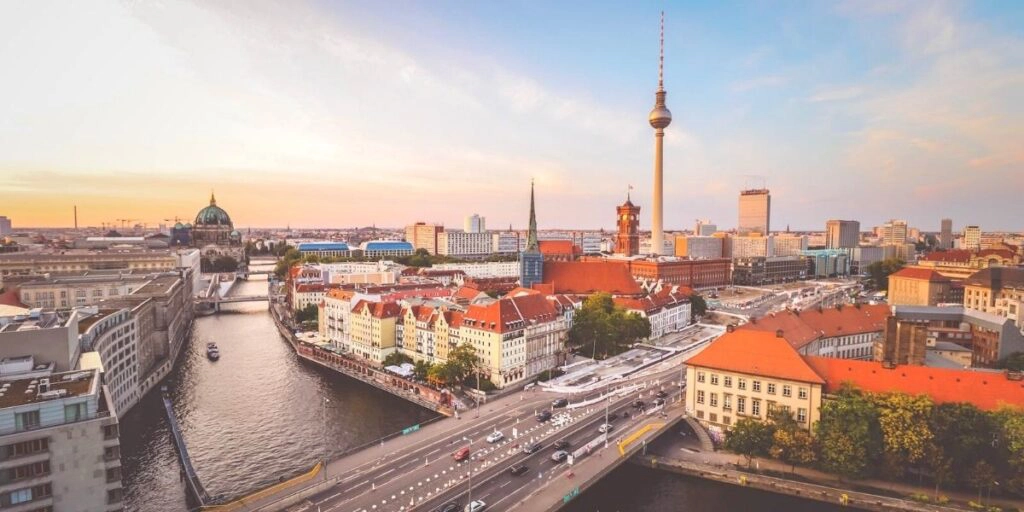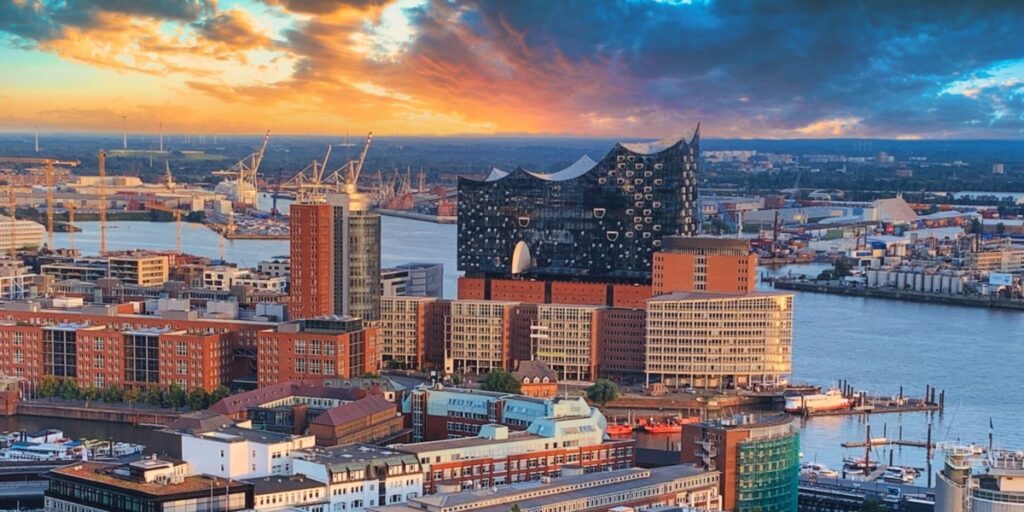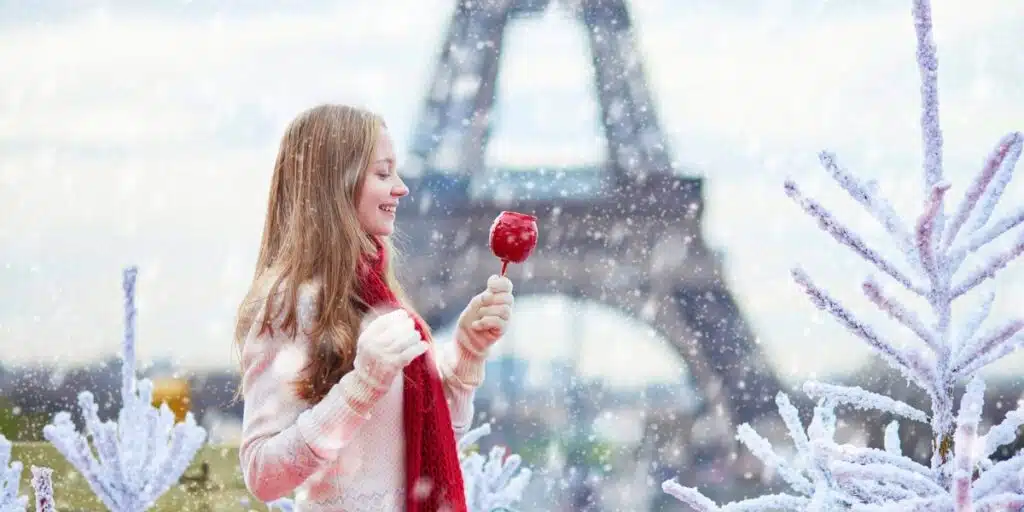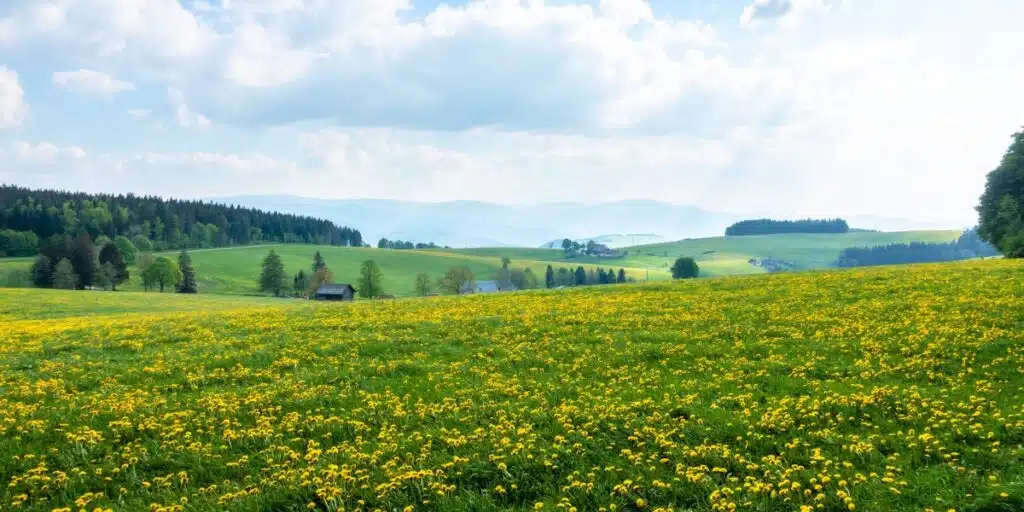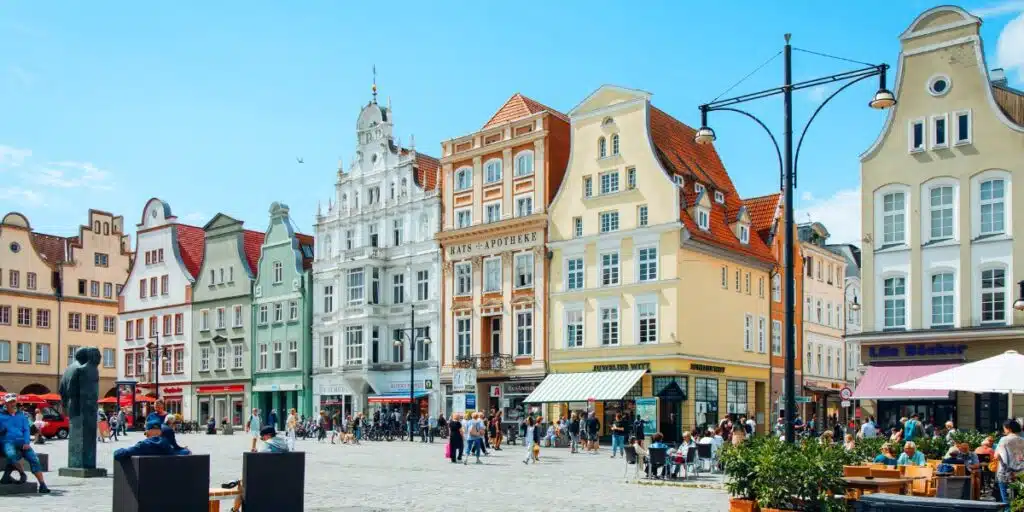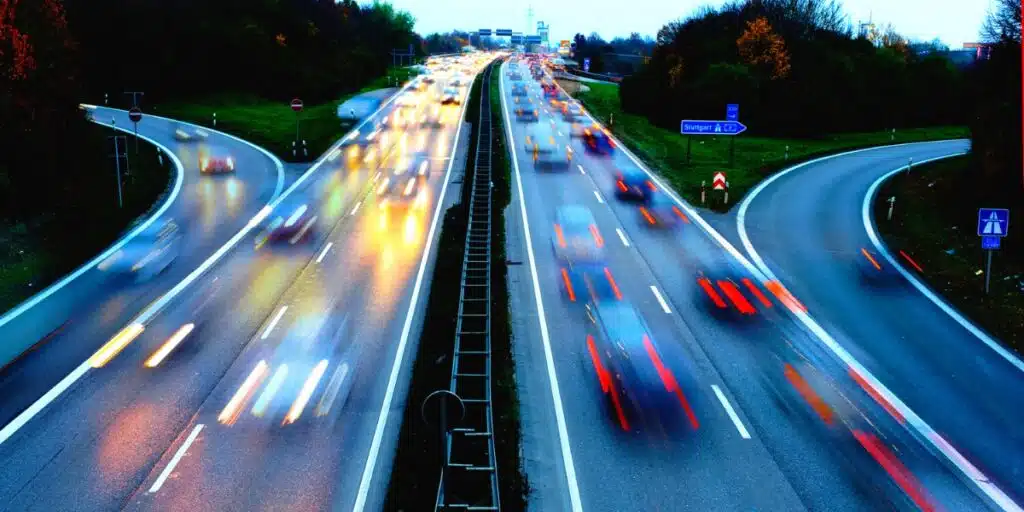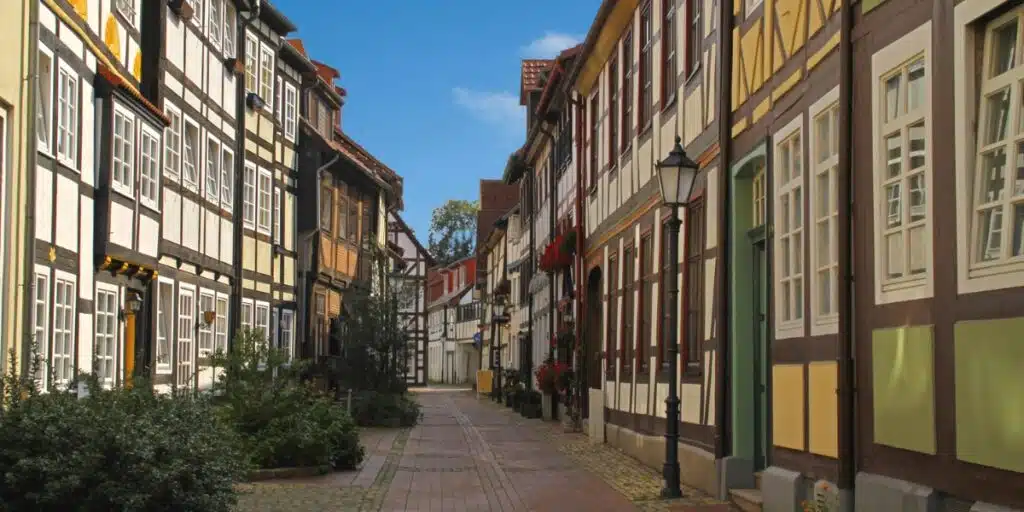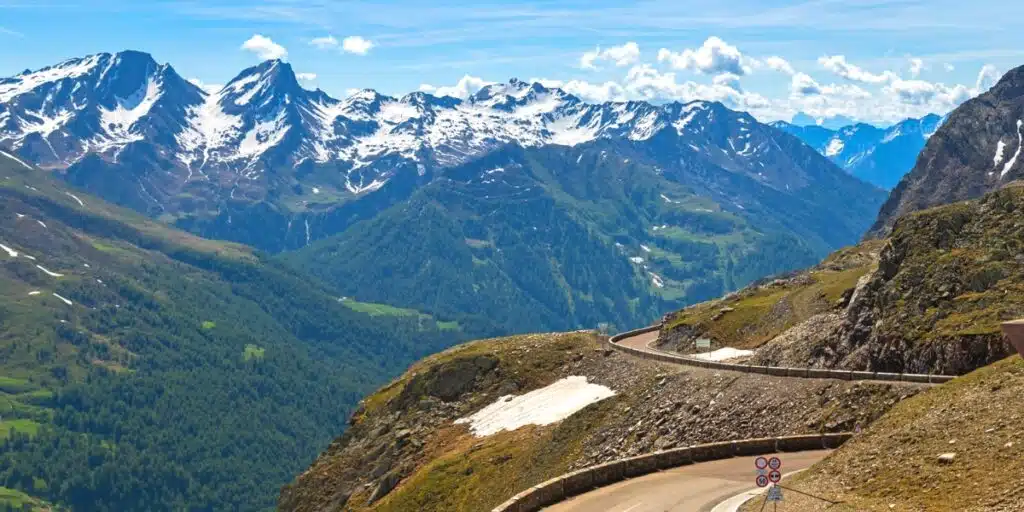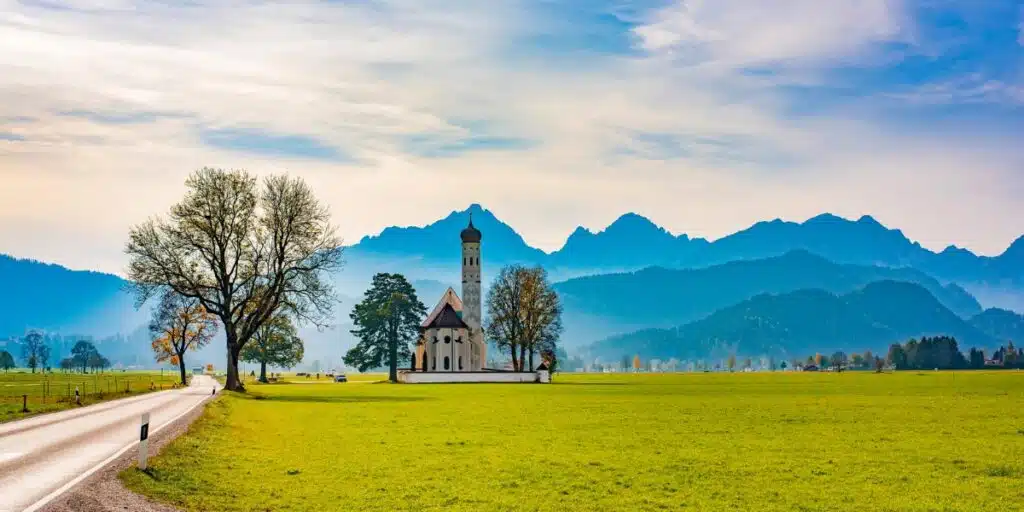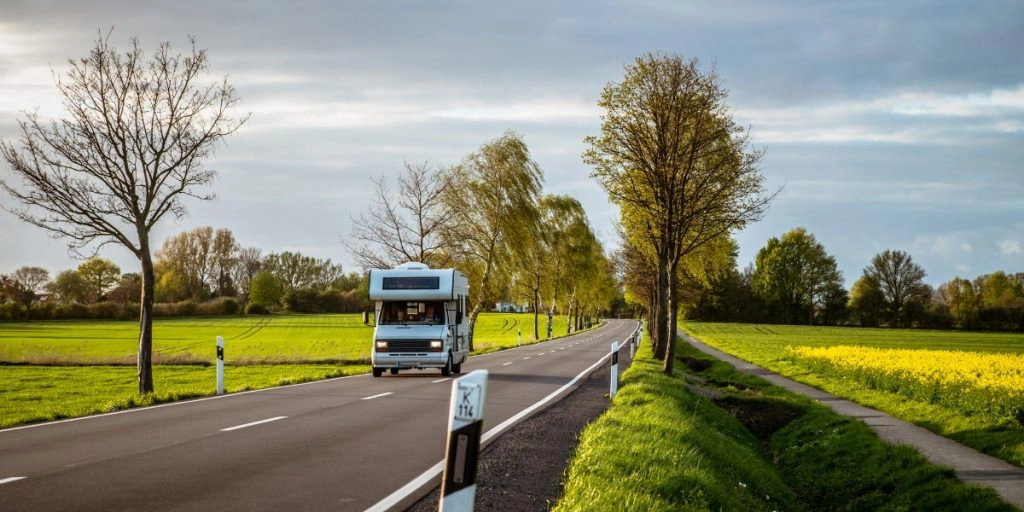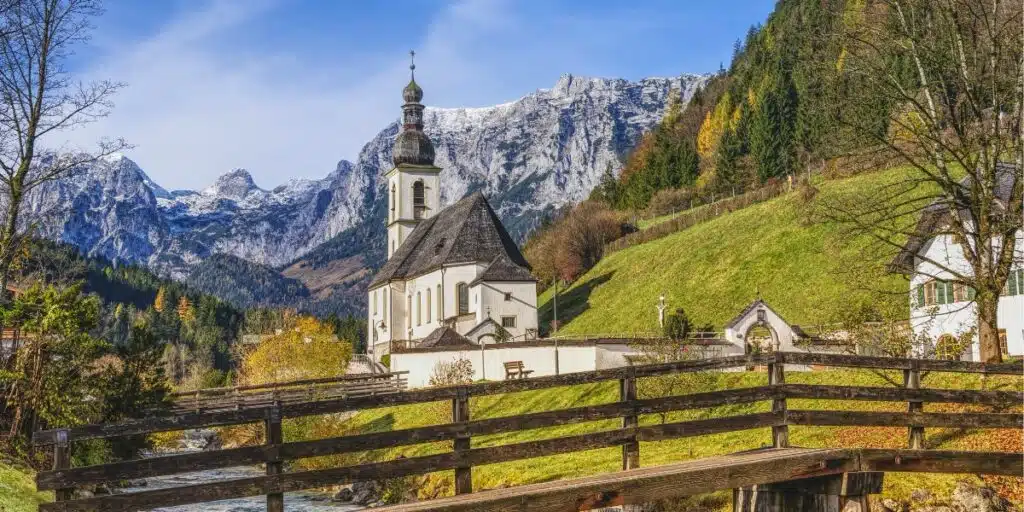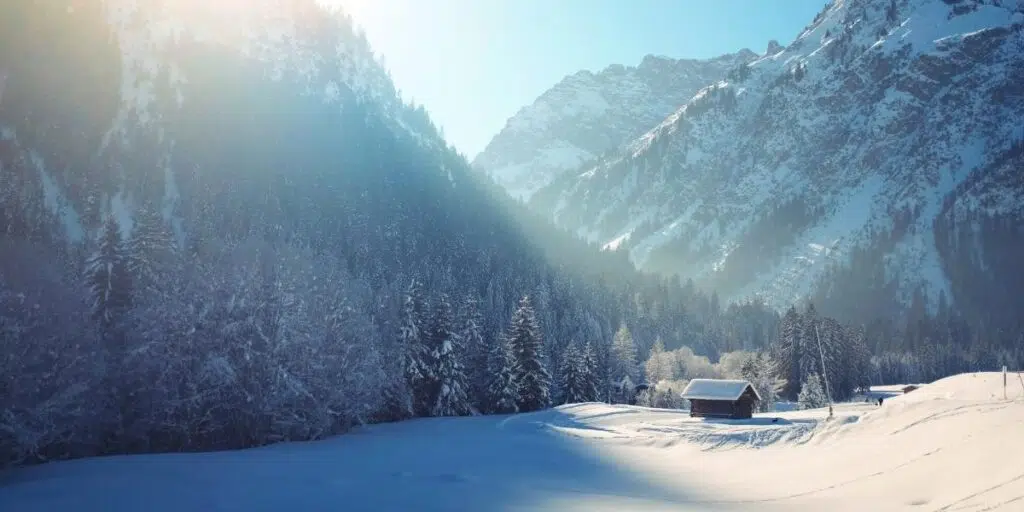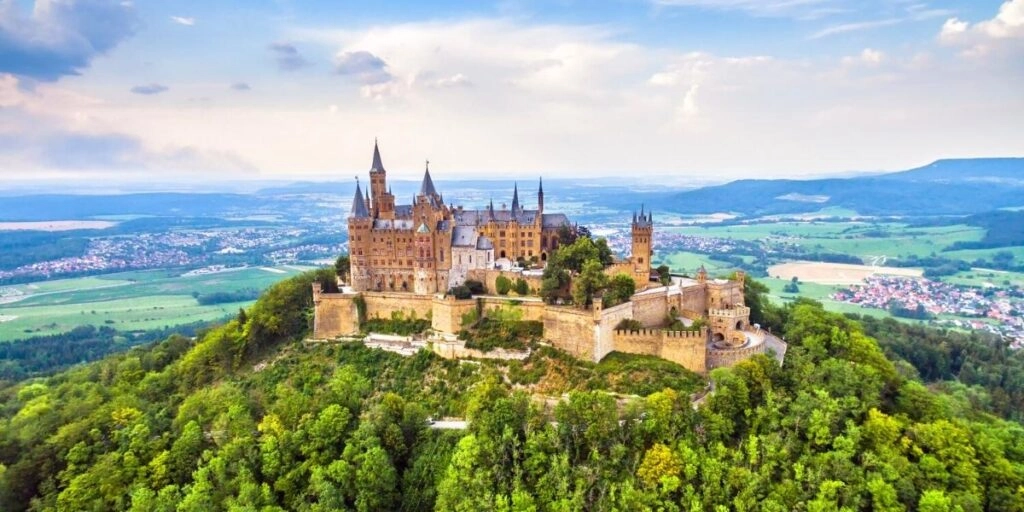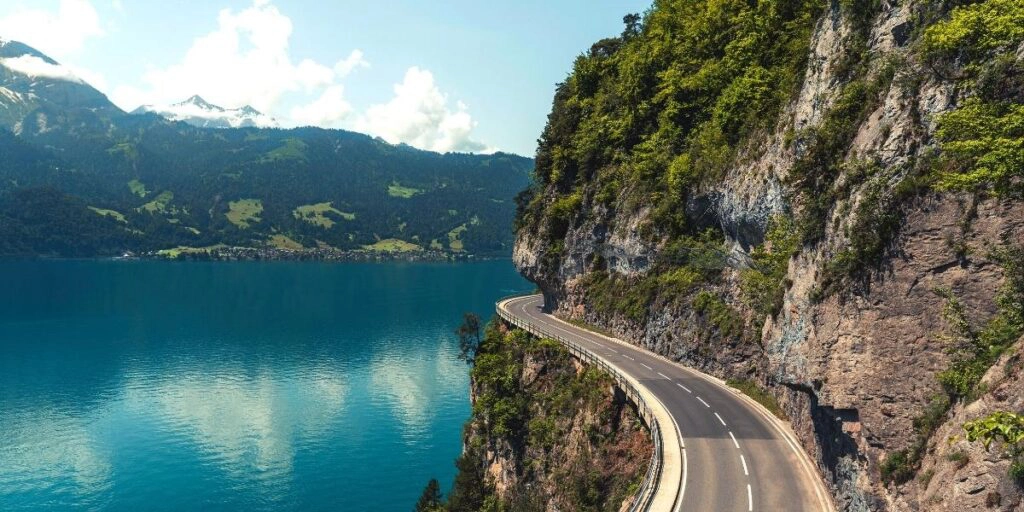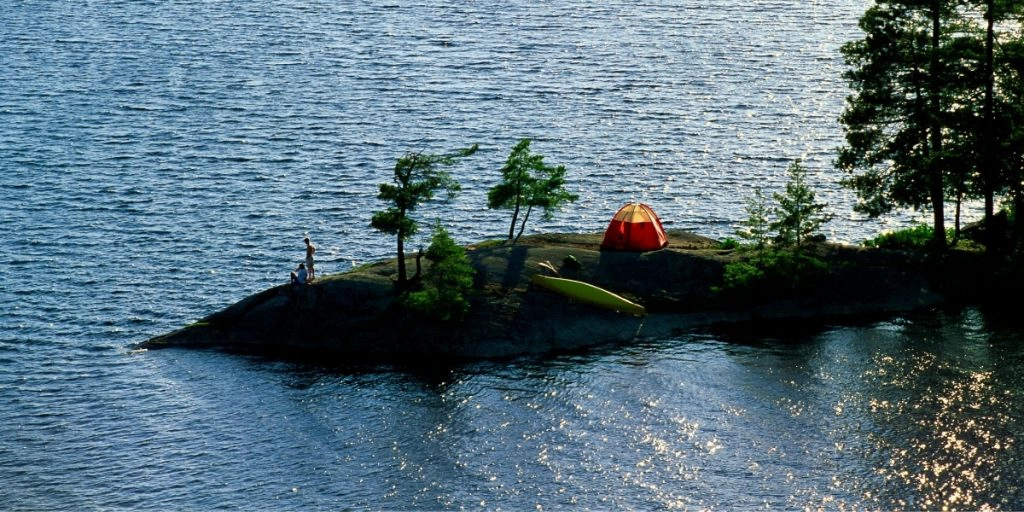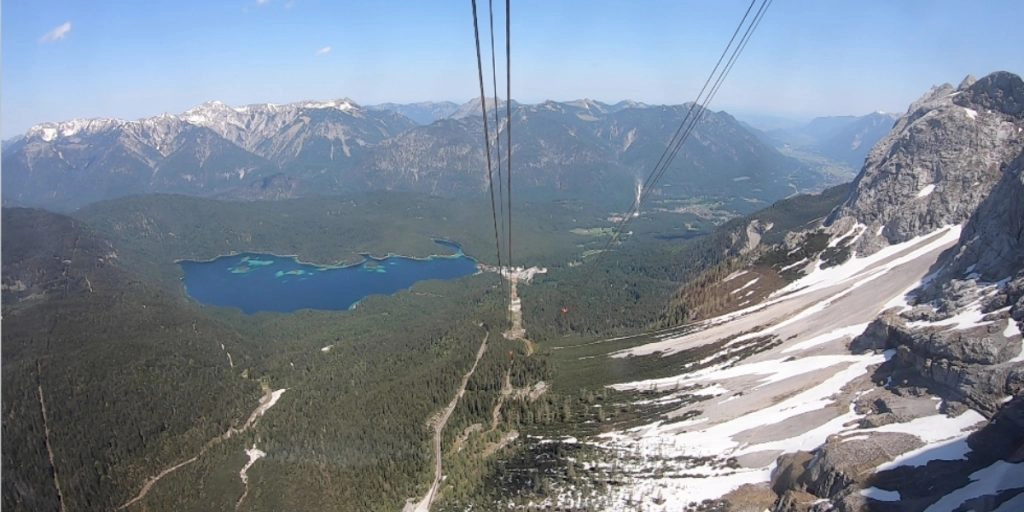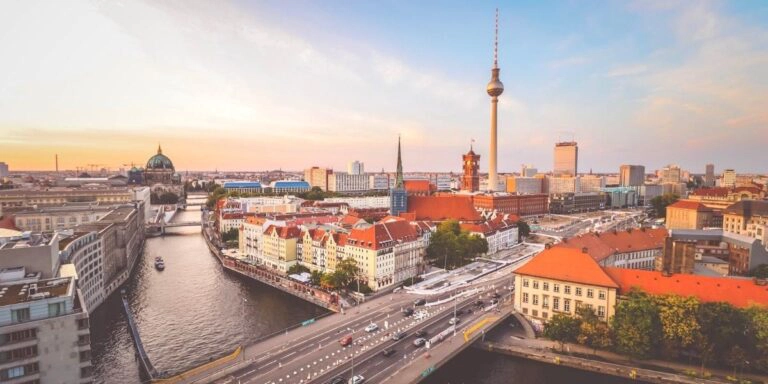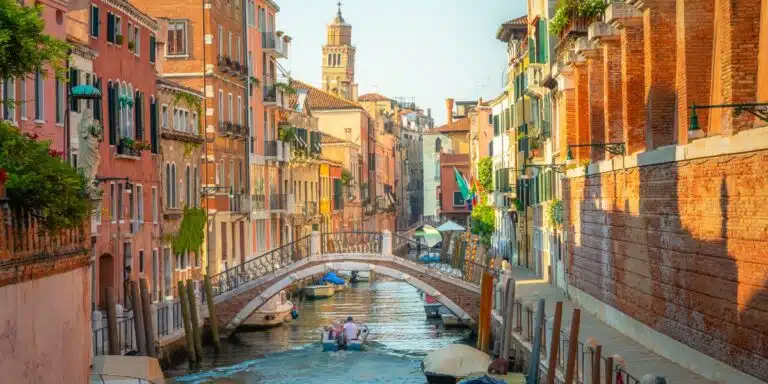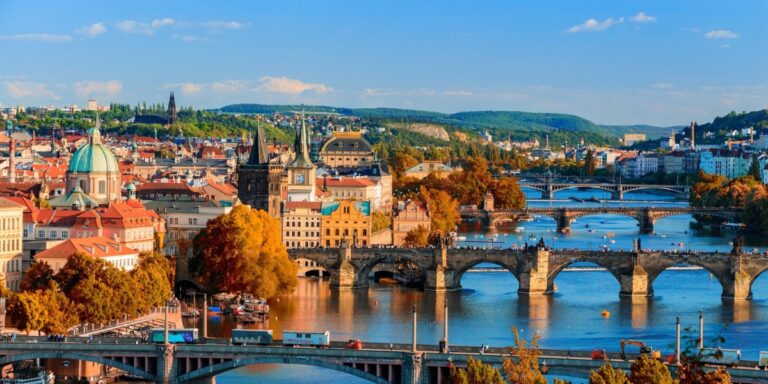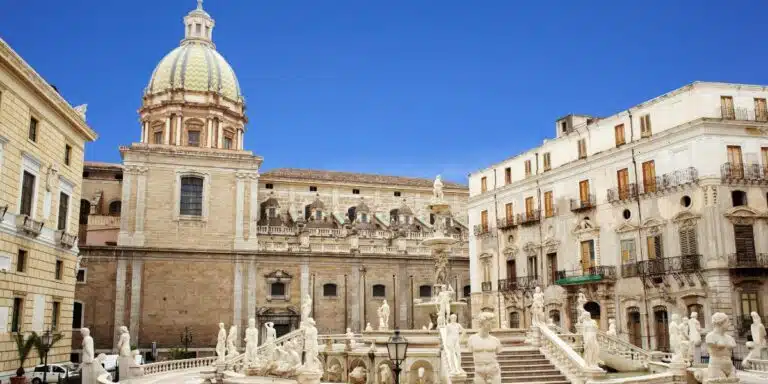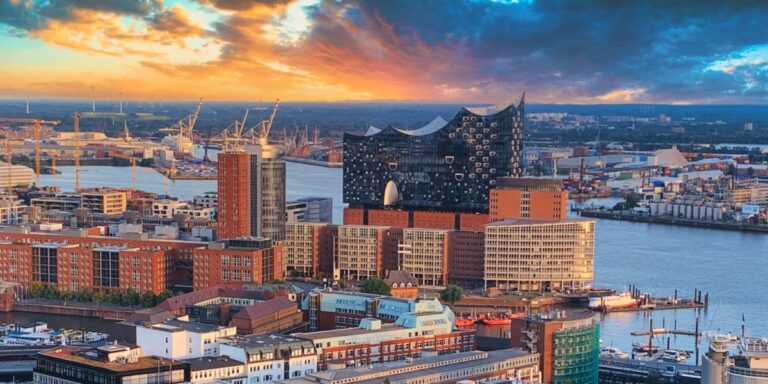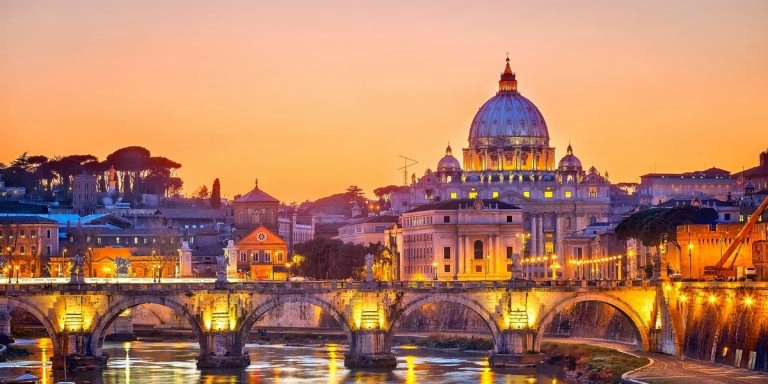This post may contain affiliate links, from which we earn an income. Click here to read our affiliate policy.
How to spend one perfect day in Munich
Munich is the capital of Bavaria and Germany’s third largest city. Located on the Isar River north of the Bavarian Alps, the city is known for its centuries-old buildings, museums, beautiful palaces and perhaps the most famous thing about Munich, its annual Oktoberfest celebration!
In our one day in Munich guide, you’ll find information and tips for visiting all the most important must-see attractions, and you will find an interactive map organized to make the best use of your time. We also share recommendations for central places to stay, ideas about where to eat local food, and tips about making the most of your one day in Munich.
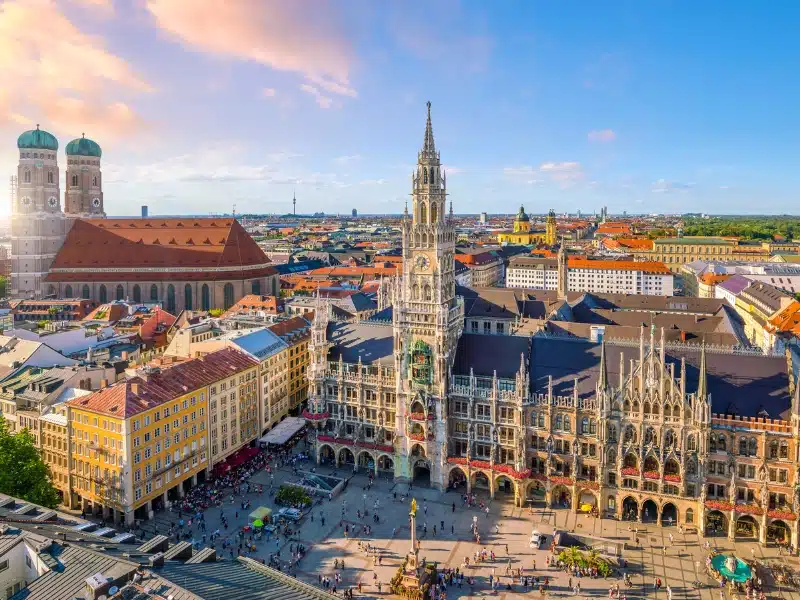
Are you planning your trip to Munich last minute?
Be sure to book your accommodation and tours in Munich ahead of time to ensure availability! Here are our top picks!
- Luxury: Louis Hotel (very central and absolutely fab!)
- Mid-Range: Hotel Mio by Amano (perfectly located & our fave)
- Budget: Cocoon Senlinger Tor (bags of character at a great price)
- Hostel: Wombat’s Hostel (best hostel in town)
- For all the best things to see in the city, grab this Munich small group walking tour
- Get your CityTourCard for free public transport + attraction discounts
- Grab the Munich hop-on hop-off bus to see the top sights
- Book this German beer and food culture tour for a great evening
- Snag this amazing day trip to see three of Bavaria’s magical castles
What to See & Do in Munich
Interactive Map
ROUTE: Schloss Nymphenburg – Theresienwiese – Munich Stadtmuseum – Marienplatz – Frauenkirche – Bayerische Staatsoper – Munich Residenz – Pinakothek Der Moderne – Olympic Park
How to use this map – Use your fingers (or computer mouse) to zoom in and out. Click or touch the icons to get more info about a place, and click the arrow in the box top left to open the index. To add to your own Google Maps account, click the star next to the title of the map.
Munich Itinerary Notes
Morning
Schloss Nymphenburg
The Nymphenburg Palace is a wonderful place to start your day of touring Munich. The Baroque summer residence of the Wittelsbach royal house was constructed between 1664-1726 and has a wonderful park and formal gardens.
The interiors are resplendent and lavishly decorated, and the park is dotted with romantic little castles and palaces, canals, bridges and much more to see.
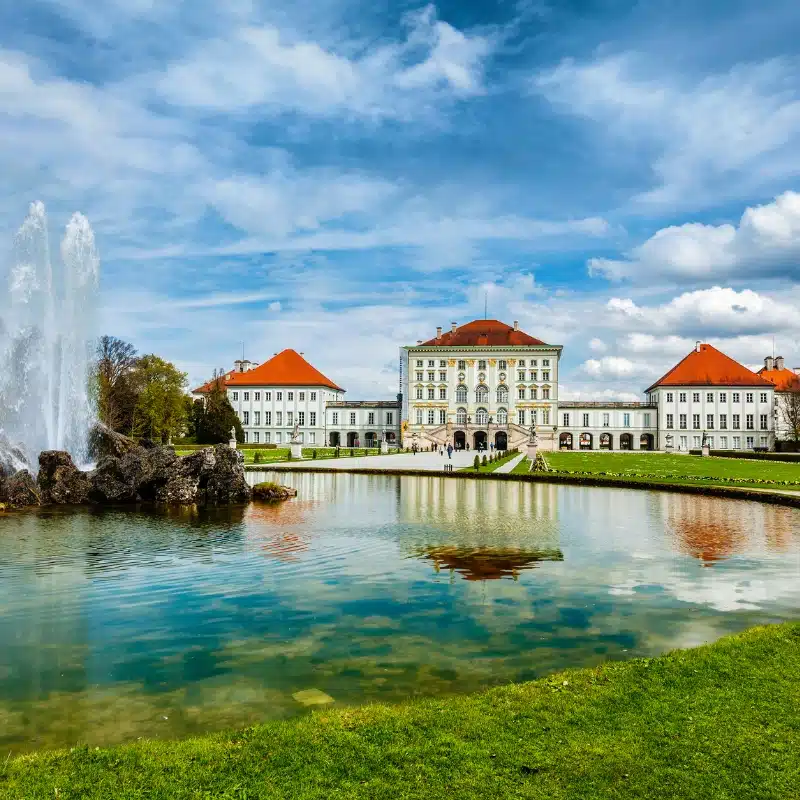
Bavarian Statue
The Bavarian Statue, known locally as the Lady Bavaria, was designed between 1843 and 1850 by Munich artist Ludwig Schwanthaler, who gives his name to a street nearby. The commanding statue stands 19 meters (61 feet) high and was cast in bronze to represent the might and wealth of Bavaria. There is an internal staircase that takes you up to a viewing platform at the head of the statue, where there are benches on which to sit and enjoy the view.
The statue looks over the Theresienwiese, the home of Oktoberfest, and stands in front of the equally impressive Hall of Fame. Tall and proud, Lady Bavaria was considered a wonder when she was built. She was considered a blueprint for other major statues planned and constructed around the world, inlcuding the Statue of Liberty in New York City.
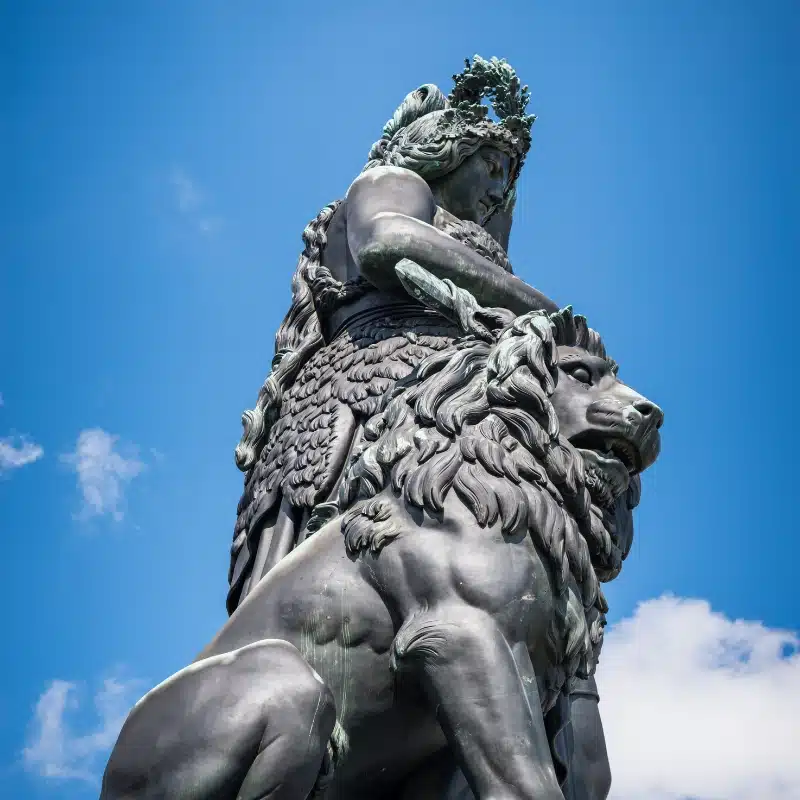
Munich Stadtmuseum
On your way to Münchner Stadtmuseum, you will pass through the gate known as Sendlinger Tor, which is one the last remaining parts of the medieval Munich city walls and has been standing since the 1500s. The city wall has been through many changes and had a middle tower until 1808, and three arches until 1906.
The Stadtmuseum is Munich’s history museum and shows the history of the city from its beginnings to the present day. There are a range of permanent and special exhibitions and pop-up galleries which showcase the story of the city and its involvement in shaping both Bavarian and German culture.
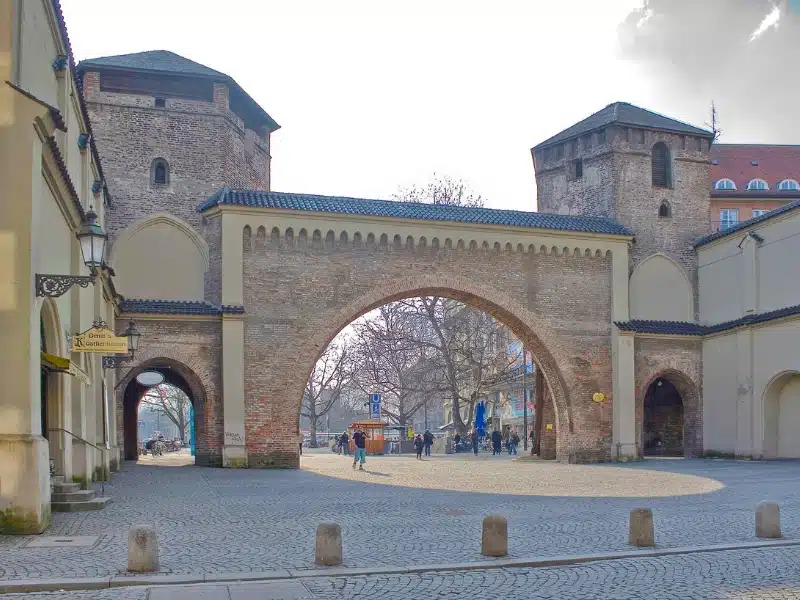
Peterskirche
A wonderful three-aisled Romanesque basilica on Marienplatz, St Peter’s Church is the oldest verifiable church building in Munich and dates back to before 1180. Around 1220, the church building was extended and some alterations were made. In 1278 a new church building was constructed but sadly this was severely damaged by the great fire of Munich in 1327. In 1329, the construction of a new Gothic church began which was completed in 1365.
From 1381-1386, a new tower with pointed spires and the first public clock in Munich were built between and above the existing two towers. The two new spires were subsequently destroyed by a lightning strike in 1607. In 1630 the Baroque period began with the demolition of the Gothic choir, and in 1636 the new trefoil-shaped three-conch choir was completed.
The church was badly damaged in the Second World War. It was reconstructed over many years with the high altar being reconsecrated in 1954, with the interior ceiling fresco only completed in 2000.
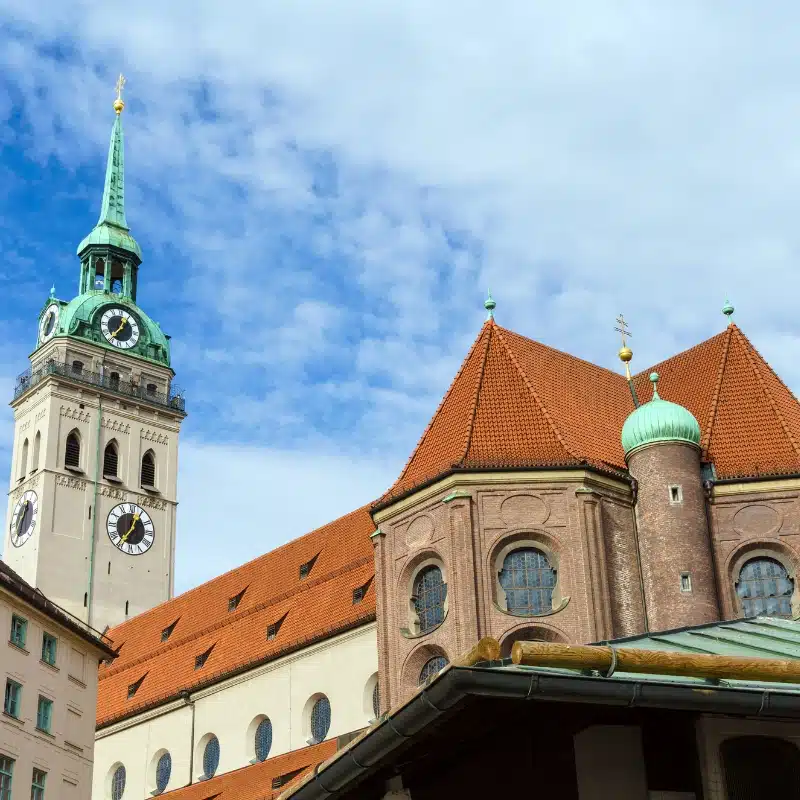
Altes Rathaus
The Old Town Hall on Marienplatz was once the seat of the Munich Municipality, until 1874 when the New Town Hall was constructed. The Old Town hall was built between 1470 and 1480 in the Late Gothic style, however, the building was remodeled several times throughout the years and in 1864 could be seen in the Neo-Gothic style. Between 1877 and 1934, two tunnels were added through the building to allow the through-flow of traffic.
This building played a key role in the Nazi’s seizure of power when Joseph Goebbels gave his infamous speech that inspired Kristallnacht, or ‘the night of broken glass’, on November 9th 1938. Kristallnacht is generally considered to be the start of the Holocaust, which the Nazis termed ‘the ultimate solution to the Jewish question’.
The building is now offices and a toy museum with a gift and souvenir shop. You can also climb to the top for a fabulous view of Marienplatz.
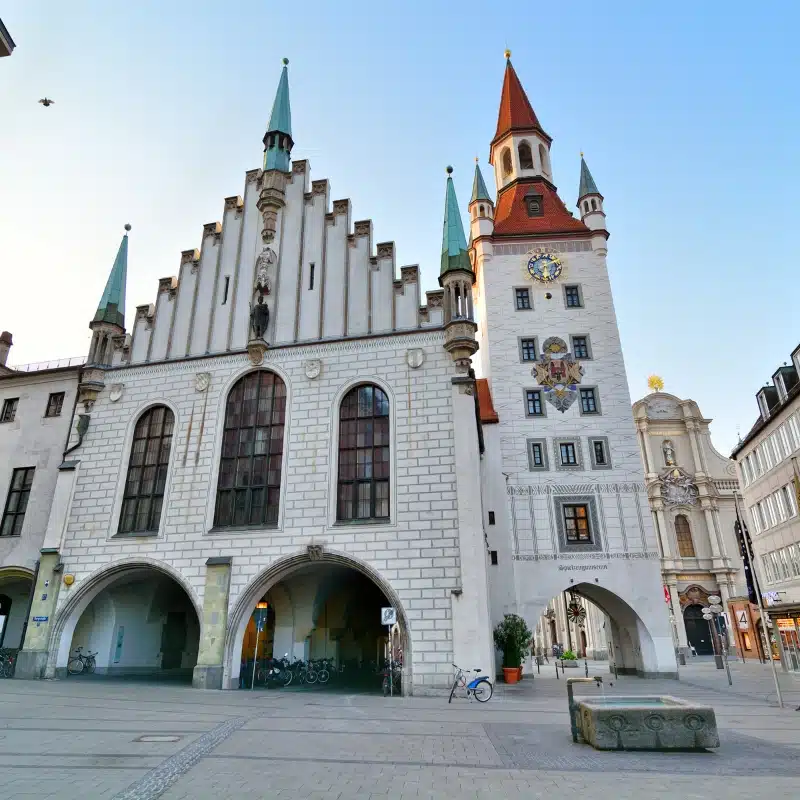
Afternoon
Neues Rathaus
Opened in 1905, the New Town Hall is also in Marienplatz, the heart of Munich. It’s an incredibly impressive building in the Neo-Gothic style and is famous for the glockenspiel (a percussion instrument consisting of a series of graduated metal bars tuned to the chromatic scale and played with two hammers) on its exterior.
At 11am and 12 noon every day, and also at 5pm between March and October, the glockenspiel puts on a show that depicts important scenes from Munich’s history. It really is very special and shouldn’t be missed. You can also hear the night watchman blowing his horn while the angel blesses the Münchner Kindl – the Munich Child – at 9pm daily.
You can also go to the top of the tower for a small fee. You will get an amazing view of the old town, and you don’t even need to climb! There are two escalators to take you up the 85 meter high tower to the viewing platform.
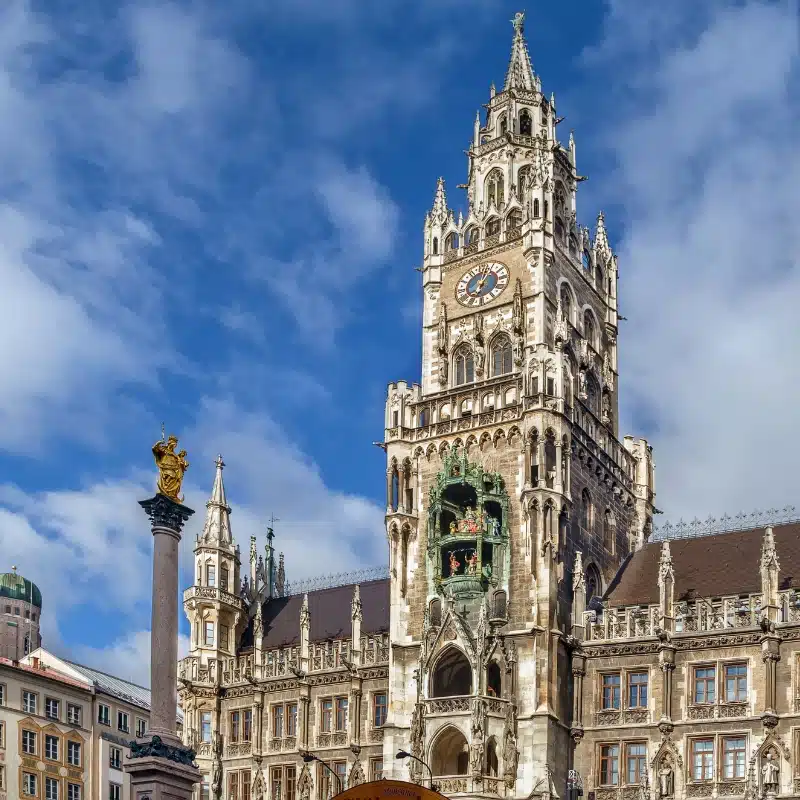
Cathederal of Our Dear Lady
Frauenkirche was built on the remains of a Romanesque church between 1468 and 1525 and is one of Munich’s most famous landmarks. The church is in the Gothic style and has three naves. It is easily recognisable by its two towers which stand just under 100m tall, with the South tower boasting seven ringing bells and the North tower, three.
The South tower is open to visitors and offers a spectacular panoramic view over the city through its sixteen windows, but you do need to climb to the top of the tower by a winding staircase with 86 steps and then an elevator.
The cathedral is also famous for its footprint in the entrance hall, said to have been made by the devil himself. As the legend goes, the devil bet the master builder for his soul that there was no window to be seen in the church. He was so convinced there were no windows and that the master builder was stupid that he stamped his feet with joy and left his footprint on the ground.
However, when he took a step forward he was able to see the windows previously hidden by columns and knew he had lost the bet. Angry he turned into wind and vowed to destroy the building, although clearly he never did!
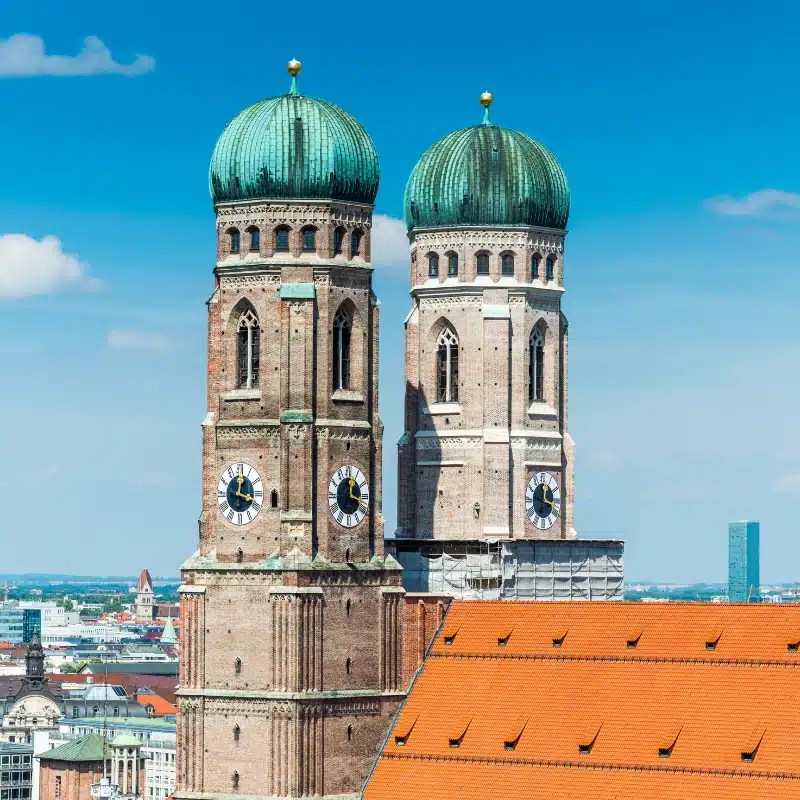
Bayerische Staatsoper – National Theatre & Bavarian State Opera
The National Theatre opened in 1818 and seems to be an unlucky building! Not long after opening it was destroyed by fire but was quickly rebuilt and reopened in 1825. The theater was modified in 1930 to incorporate a larger stage, but again was destroyed, this time by World War II bombs.
The building was rebuilt to the original neo-classical design, although it was much larger, and it incorporated the original foyer and staircase when it reopened in 1963.
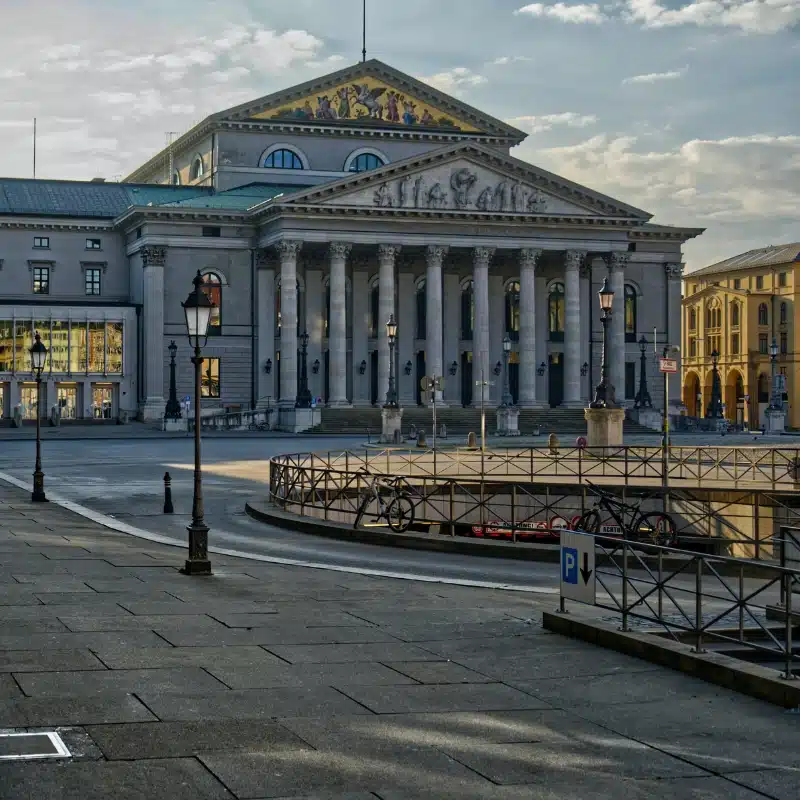
Munich Residenz
The Munich Residence served as the seat of government and residence of the Bavarian dukes, electors and kings from 1508 to 1918. Starting life in 1385 as a castle it was transformed by the various rulers over the years into a magnificent palace, with its buildings and gardens extending further and further into the old town.
It is the largest city center palace in Germany and has amazing art collections as well as crown jewels, bronze halls with sculptures, the Hercules Hall, the All Saints’ Court Church, the treasury and of course the royal apartment of Ludwig I. Many of the furnishings, paintings and tapestries are still in the same places they were when kings lived there.
Like many of the buildings in Munich, much of the Residenz was destroyed during the Second World War. It was gradually reconstructed starting in 1945 and today, with the museums, the Residence Museum itself, the Treasury and the Cuvilliés Theatre and many other cultural institutions, this is one of the largest museum complexes in Bavaria.
RELATED POST: Beautiful Cities in Germany: 27 Picturesque Cities to Visit
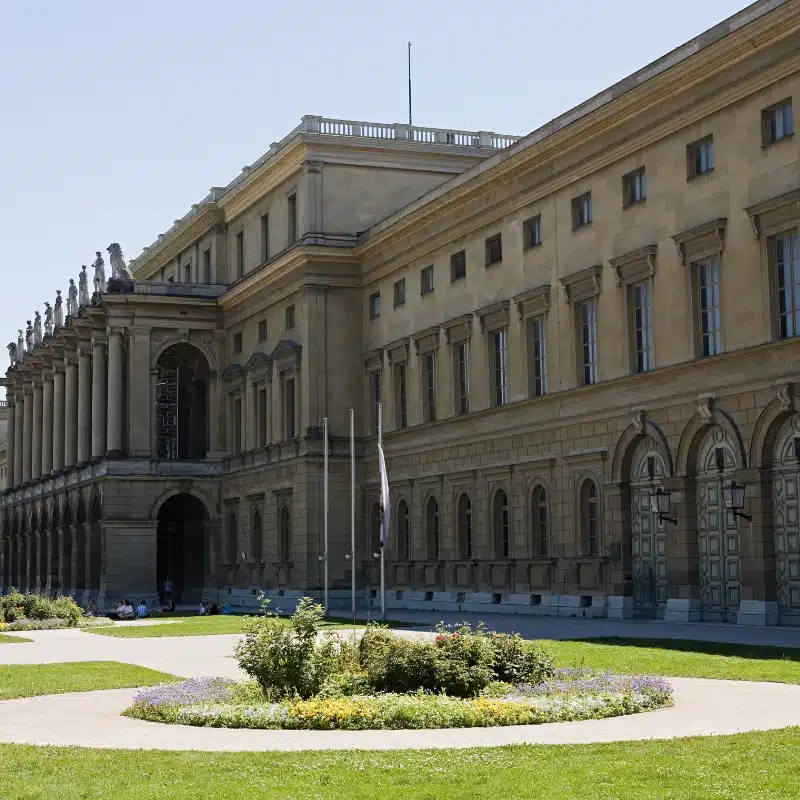
Pinakothek Der Moderne – Museum of Modern Art
Opened in 2002, Munich’s Museum of Modern Art is one of the world’s largest modern and contemporary art museums, with four museums being housed under one roof.
The building itself is a powerful sculpture, made of concrete and glass. Each of the four corners of the building, connected by a central domed rotunda, is dedicated to a special collection. The museum is thus divided into art, architecture, design and works on paper.
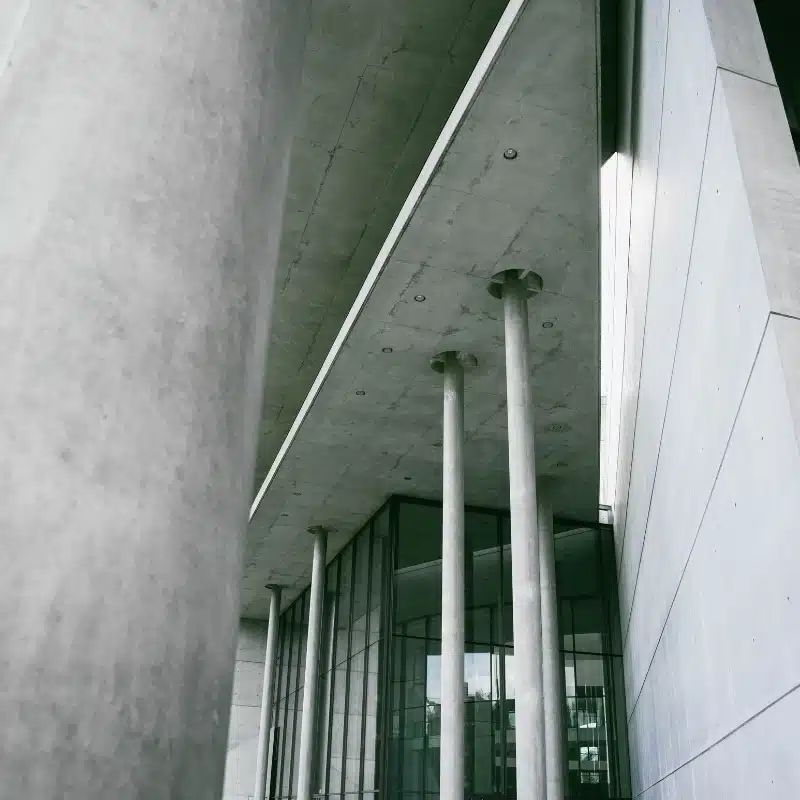
Olympiapark München – Olympic Park
Enjoy a walk through the amazing Olympic Park and visit the Olympic tower, built in 1968. The Olympiatrum is the highest point in Munich at 291 meters, and you can head up to the 190m observation deck for some spectacular scenic views. On a clear day, you can see as far as the Alps.
There are so many things to see at the park. Take a stroll and discover the Olympic Stadium and walk of stars, or take a guided tour, such as a roof walk of the stadium, followed by a zip wire down.
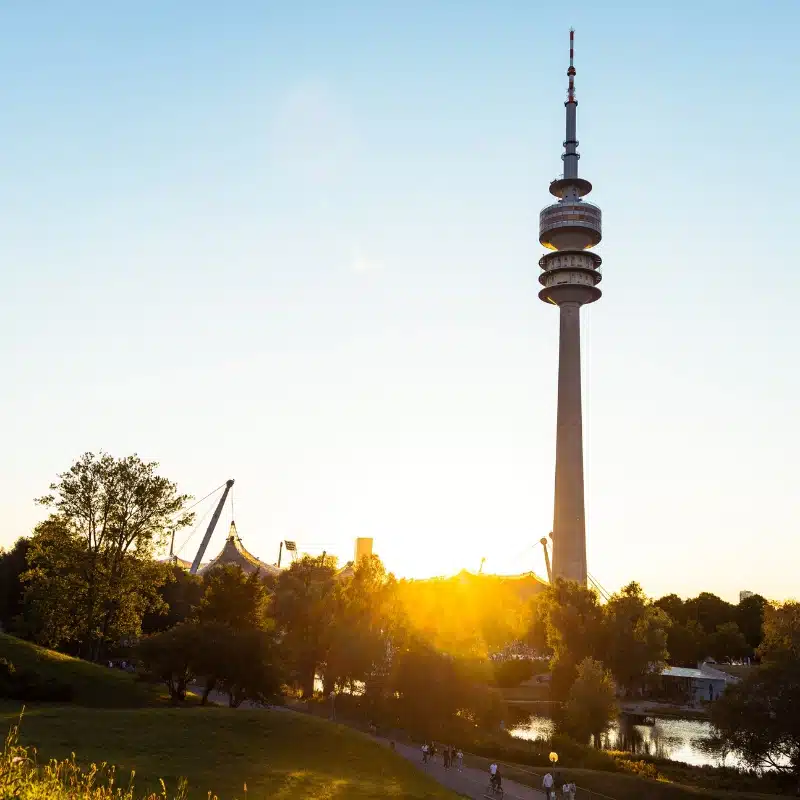
Evening
Hofbrauhaus
Constructed over 500 years ago, Hofbrauhaus is Munich’s oldest beer hall and is full of fabulous architecture and history. On the first floor, a band plays Bavarian folk music and the bar is always buzzing with locals, making it the perfect spot to start your evening.
The beer hall also holds tradition close. So-called ‘regulars tables’ are a huge part of the Bavarian tavern tradition, with Hofbrauhaus having over 100 active groups of regulars. The oldest regulars table has been held for over seventy years and the regulars also have their own personal mugs stored at the world-famous safes in the schwemme or beer hall.
Head to Schwabing
Schwabing is one of Munich’s coolest and trendiest neighbourhoods, with many fashionable local boutiques and jewellery stores. This vibrant district of the city is also widely recognised for its collection of bars and is the ideal place to relax and explore after dinner.
Schwabing has a very artsy vibe and attracts the young and hip crowd from all over the city. There are great places to stop for a delicious cocktail and great music, such as Wallace Bar, with its dark panelling and moody feel, or Cocktailhouse, which has been a staple of Schwabing for over 30 years.
Party in Glockenbachviertel
Considered the coolest neighbourhood in Munich, Glockenbachviertel is the place to be if you want to go clubbing. You can discover a variety of different creative places from boutiques and galleries to performance art spaces.
This LGBTQ friendly district has the best all-night bars and clubs that Munich has to offer, and you will love being able to party until dawn.
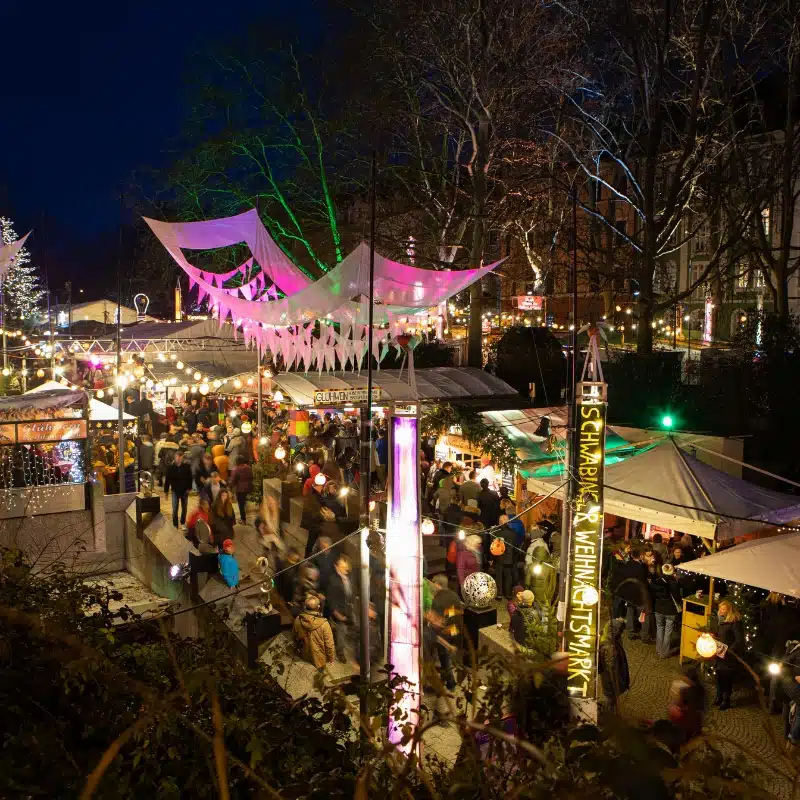
German Travel Ideas
Where to Eat in Munich
Viktualienmarkt
This daily Victuals outdoor food market is a must-see, used by locals to buy the best and freshest local ingredients. It also offers many food stalls that offer an excellent selection of food ready to eat, perfect for a picnic in the beer garden, the only place in Munich that serves beers from different breweries on a rotating basis. The market is open throughout the year, and in the colder months, you can swap your beer for glühwein, the famous German mulled wine.
Try this fantastic gourmet tour of the market to tantalize your taste buds with regional cuisine as well as international delicacies as you immerse yourself in the bustling life of the market.
Wirtshaus Maximillion
If you want traditional Bavarian food head to Wirtshaus Maximilian, where the menu offers customary fare such as wurst (sausages), schnitzels and pretzels and an impressive 30 to 40 German beers on tap or bottle, alongside German and Austrian wines.
Schwarzreiter Tagesbar & Restaurant
For a truly exceptional experience book a table at the one-starred Michelin restaurant Schwarzreiter Tagesbar and Restaurant. Located in the Vier Jahreszeiten Hotel on the famous Maximilianstraße, the chic interior of soft cream colours is both elegant and stylishly modern. You can choose to eat either in the Tagesbar (day bar) or the restaurant, both serving what they refer to as ‘young Bavarian cuisine’.
Enjoy a Beer and Bavarian Food Tour
A warm glow is guaranteed when you experience German beer and food culture on this evening tour in Munich. You’ll meet a friendly local guide who’ll introduce the beer capital of the world and tell you about the secret haunts where locals go for the really good stuff.
You get to sample several different delicious beer varieties and some traditional Bavarian food like cheese, meats, wurst and the suprisingly delicious sauerkraut (fermented cabbage) on a delicious Bavarian food platter, as you sit with your group at a table in one of the city’s finest old beer halls.
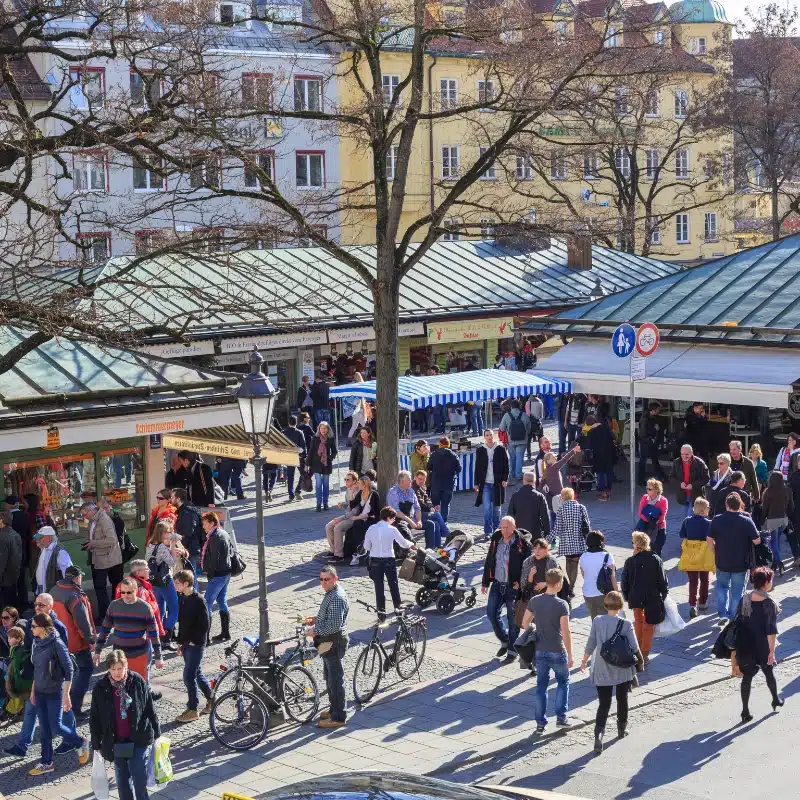
Top Five Munich Travel Tips
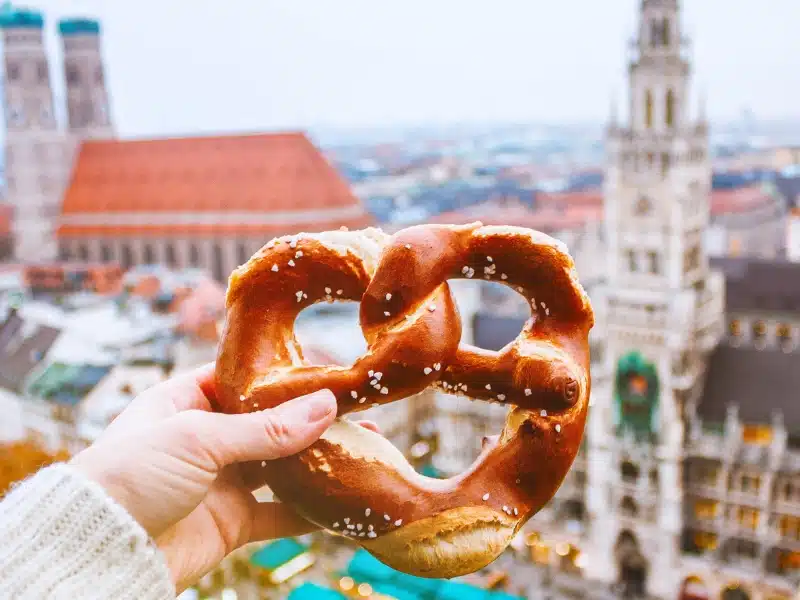
Planning a Deutsche Alpenstrasse road trip? Our Deutsche Alpenstrasse guide has the map & route, info on things to do/see, where to stay + tips for driving the iconic alpine road.
More Than One Day in Munich
BMW Welt & BMW Museum
Start your visit at the BMW Museum, an amazing architectural building, which was opened in 1972 just after the Summer Olympic Games of that year. Inside you will find over 100 years of BMW innovation on display, where any questions you may have about BMW’s past, present and future will be answered!
Walk across the bridge and you will arrive at BMW Welt. Futuristic architecture at its best, the building has been engineered to be able to support a 16,000 square meters roof with only eleven columns. Inside, corridors are hung from the ceiling to keep the space open. The front of the building is supported by a stunning glass and steel double cone.
BMW Welt shares fascinating insights into the present and future of mobility and allows visitors to immerse themselves in the world of BMW with our exhibitions and events.
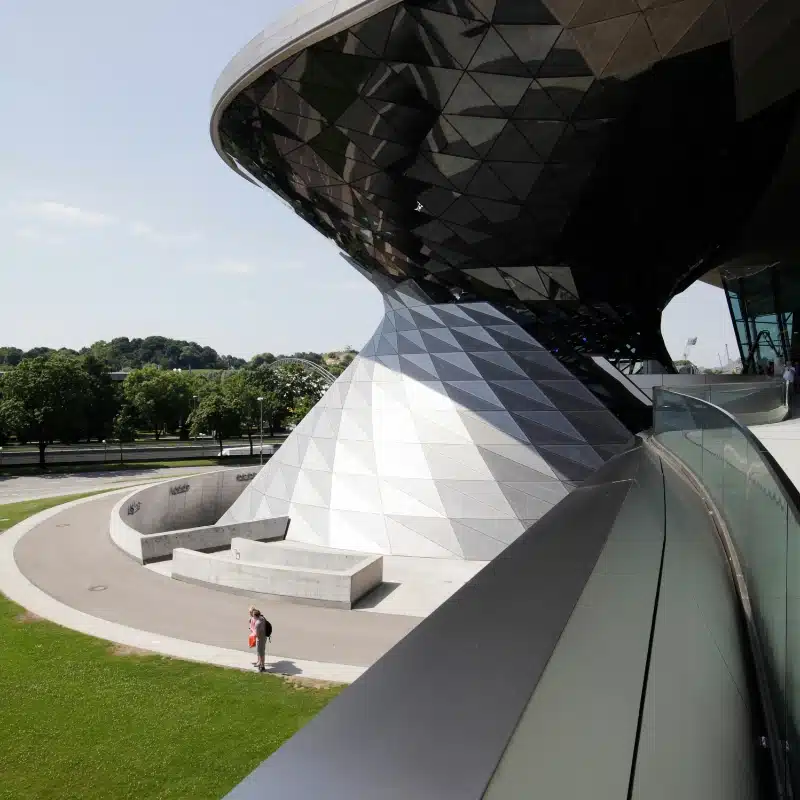
Visit Nuremberg
The ancient and beautiful city of Nuremberg has been an important centre for arts and culture since the Middle Ages and has preserved its Gothic churches, hilltop castle and most of the old walls that have encircled it since the 14th and 15th centuries.
It is where the Third Reich made their symbolic home and was considered the most German of German towns. It was also where the Nazis were held accountable for their despicable actions.
Take a day trip from Munich to Nuremberg by train, and arrive in under 90 minutes. Your expert guide will accompany you and share the ancient and modern-day history of this fascinating city which was a center of cultural and intellectual vitality at the crossroads of major imperial trade routes.
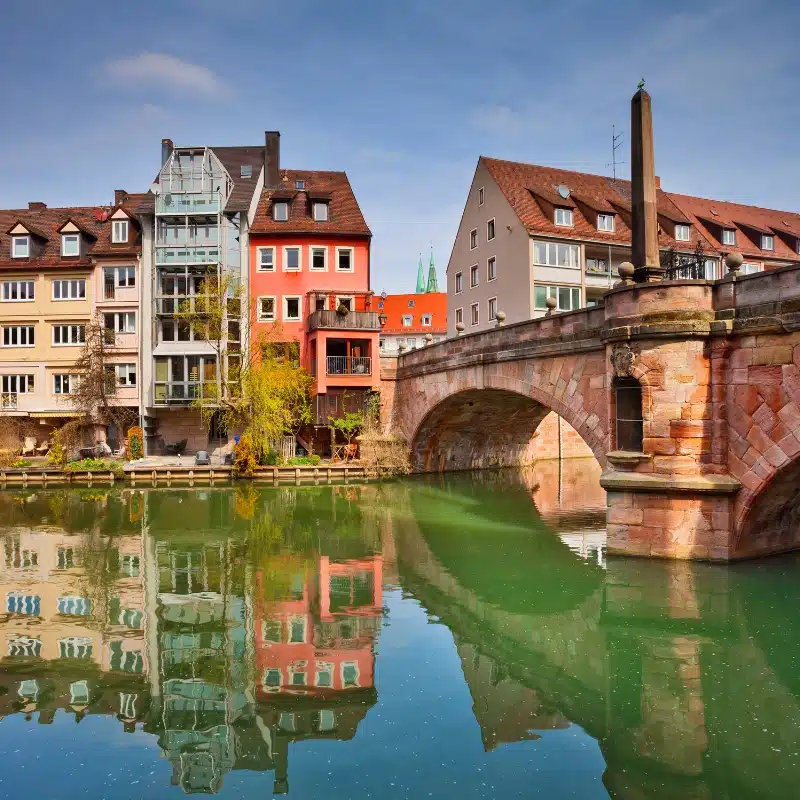
Visit the Dachau Concentration Camp Memorial Site
If you’re interested in Germany’s recent history, take a Dachau concentration camp guided tour. You’ll travel there by train, and on the way, you will learn about the rise of the Nazi Party throughout the 1920s up to Adolf Hitler’s appointment as Chancellor in 1933, and find out about the introduction of concentration camps, and the role Dachau played as a model for other camps.
You will also visit the SS training facility, the bathhouse, and the main gate with the infamous ‘Arbeit Macht Frei‘ slogan, which means ‘work sets you free’, and see the perimeter fence, several religious memorials, and the bunker, which acted as a prison within the camp. Your guide will explain the methods of torture and punishments used in the camp, and the various medical experiments carried out on prisoners as you learn about this haunting dark tourism site.
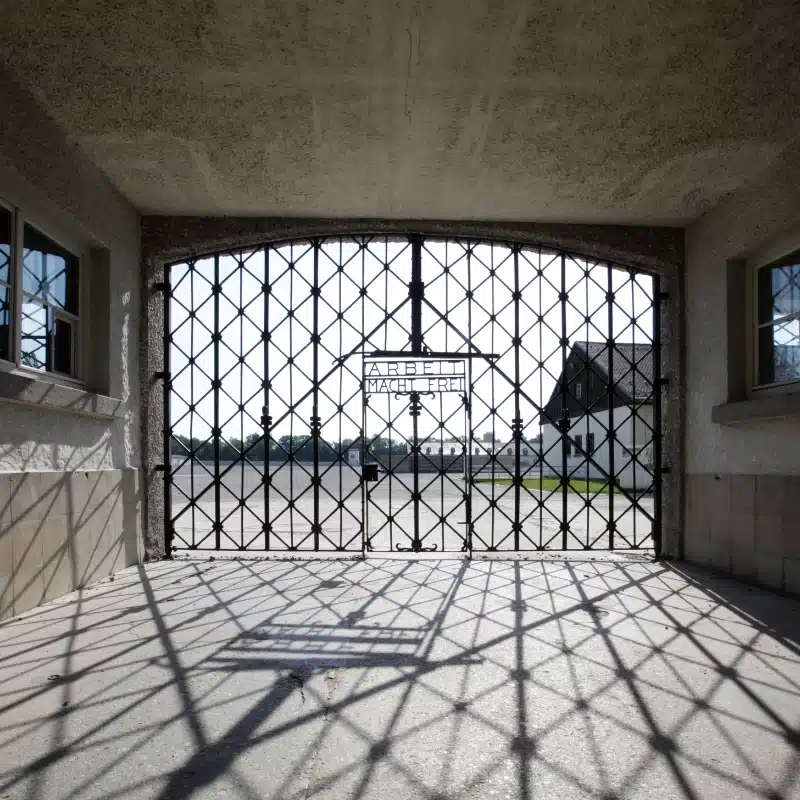
Visit Zugspitze in the German Alps
Travel to Garmisch-Partenkirchen from Munich and ascend the Zugspitze with this popular Zugspitze mountain tour. Take the ultra-modern cable car up Germany’s highest mountain. Have a beer at the highest beer garden in the country and take a round-trip ride through the mountains by a cog-wheel train as well!
From the top, you’ll have breathtaking views of the Alps which seem to stretch on forever. You’ll take a break for lunch at a small mountain hut, where you’ll also have lovely views over the peaks of the Alps and the gorgeous Eibsee lake.
RELATED POST: Visit Zugspitze Germany – Find Out How!
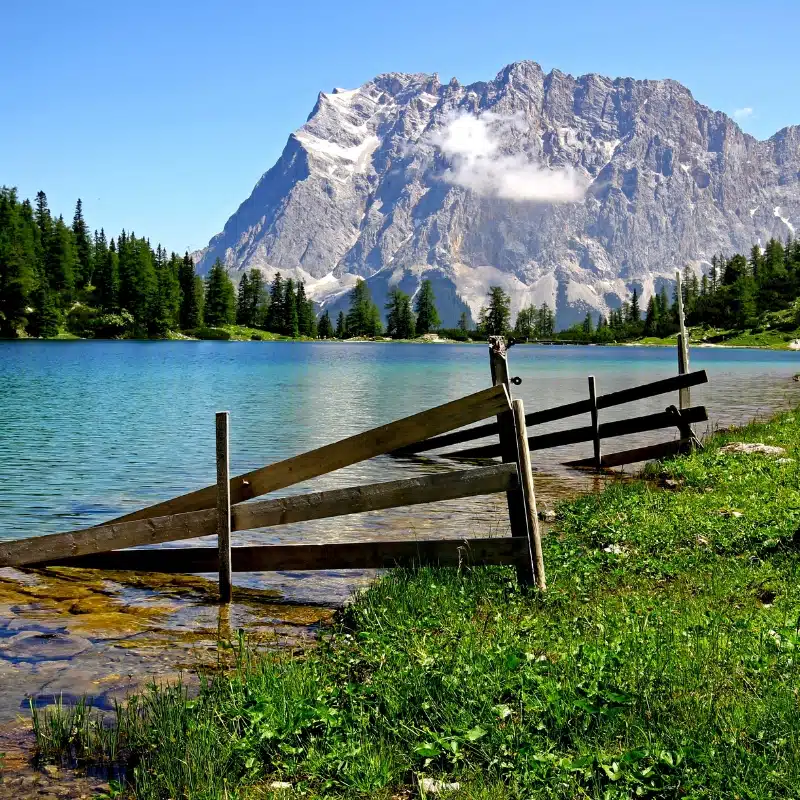
Neuschwanstein & Linderhof Castles
If you take one day trip from Munich, make it this highly recommended day trip. Visit fairytale Neuschwanstein, intimate Schloss Linderhof and scenic Hohenschwangau, before travelling through the little town of Oberammergau, famous for the ten yearly Passion Play.
With a professional guide to offer insights, an organised hiking tour is the perfect opportunity to see more of Germany in less time!
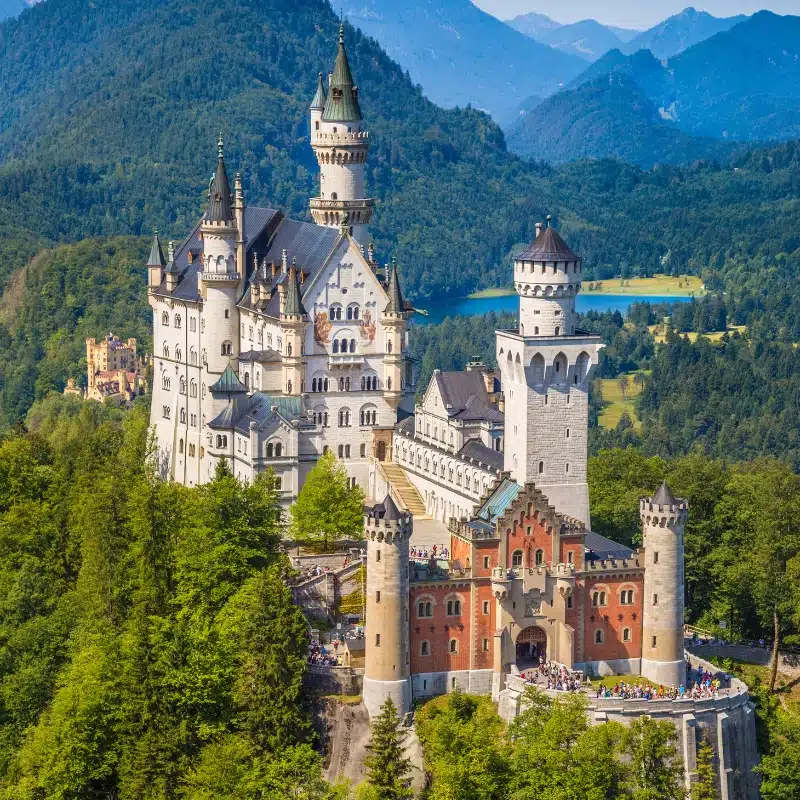
Munich Practicalities
When to Visit Munich
Winter
December in Munich is magical with many Christmas markets, wonderful light displays and an abundance of delicious gluhwein – mulled wine – on offer, all of which make it a great location to get into the Christmas spirit.
January and February can be pretty bleak, but there are many interesting galleries and museums open to help you stay warm. The city will be eerily quiet as people hole up indoors or head to the nearby mountains for some fun in the snow.
This is a perfect time to venture out of Munich and road trip the Romantic Road, for medieval villages, Christmas markets and fairytale castles.
Spring
Spring can start off quite cold and wet, but as March goes on the weather gets warmer and this is marked by Munich’s many beer gardens starting to open, and wonderful displays of flowers around the city. There is no better place to enjoy the spring blooms than the Munich Botanical Gardens.
There is also the annual Starkbierfest, or Strong Beer Festival, that falls over Lent. Strong beer was originated by the Paulaner monks who decided if they couldn’t get enough calories from eating food, they would drink strong beer, also known as bocks or doppelbocks.
To qualify as a strong beer, the brew must have an ABV of 7% and above. Unlike the traditional beer fests in Munich, Starkbierfest take place at the breweries instead. As this is not a tourist-heavy event, it’s a real opportunity to experience local life in Munich.
If the Starkbierfest isn’t for you then don’t worry, you can enjoy a more typical beer festival at Springfest or Frühlingsfest, a smaller version of Oktoberfest which takes place in two massive beer tents, for two weeks across the last week of April and the first week of May.
As well as the beer, you will see many locals in typical Bavarian dress and you’ll also get to try some great traditional Bavarian food. The festival takes place in Theresienwiese, known locally as the Wiesn.
The Wiesn is the huge open meadow near the city centre, and whilst there are only two tents, is just as much fun and has all the same rides and vendors for you to enjoy.
Summer
Summer is a fantastic time to visit Munich. The weather is lovely and there is so much you can do outside, such as open-air concerts, outdoor cinemas and street festivals, all of which provide great summer fun.
In June there is the annual Munich Film Festival, and also the StuStaCulum, Germany’s biggest music, theatre and culture festival arranged by students and held across four days in the student district of Freimann in the north of Munich. The Opernfestspiel also starts in June and runs through July. This annual Opera Festival includes, opera premieres, ballet, concerts and song recitals.
In July, you can head to the Isar River to cool down from the heat by taking a dip in the beautifully clear water and relax at one of the river bank beaches with their sunchairs and umbrellas, or head to the Eisbach, a small, man-made river. It flows through the park known as the Englischer Garten or English Garden and is a small branch of the Isar River.
Here you can try your hand at river surfing on a man-made wave, enjoy the view from the Monopteros and relax with a beer and something to eat at the Chinese tower. You can easily while away a whole day in the English Garden, Munich’s biggest park and one of the largest inner city parks in the world.
Christopher Street Day is also in July and is a wonderfully colorful and loud gay and lesbian street party with over 200,000 visitors. It takes place over one weekend in the Aldstat, Marienplatz and Ridermarkt.
August is a very quiet month in the city, as many of the locals leave the city to take their summer holidays, however, there are still many festivals to enjoy. The Münchner Open Air Sommer, is a two-week music festival, offering everything from rock, pop, opera, jazz, folk and classical.
Hans-Sachs-Strasse is home to Schwules Strassenfest, Munich’s gay street festival which runs over a day starting at 1pm and closing at 11.30pm. The festival, which started in 1991, is one of Munich’s biggest summer parties when two streets are closed and there is a large stage with DJs and acts as well as beer and food tents, and a great fun street market. The festival is followed by a series of after-parties in all the gay clubs and bars.
Fall
Oktoberfest actually starts in mid-September and runs through the beginning of October. With seventeen huge tents and 21 small ones, this is the world’s largest beer festival. The festival kicks off with the parade of the Oktoberfest tent owners, who take the beer to the Theresienwiese, with festively decorated wagons and brewery carriages.
The Mayor of Munich taps the first keg in the Schottenhamel festival tent, and then twelve gunshots are fired to signal to the other tents that the festival is open and the beer can start to flow. If you want to enjoy this spectacle, the tents open at 9am for you to grab an empty table, however, no beer is served until the midday gunshots have been fired.
Autumn is also the busiest and most expensive time to visit Munich. If you want to go and experience Oktoberfest make sure you plan as early as possible, as hotels book up as much as six months in advance.
RELATED POST: Autumn in Europe: 23 Stunning Destinations for Fall
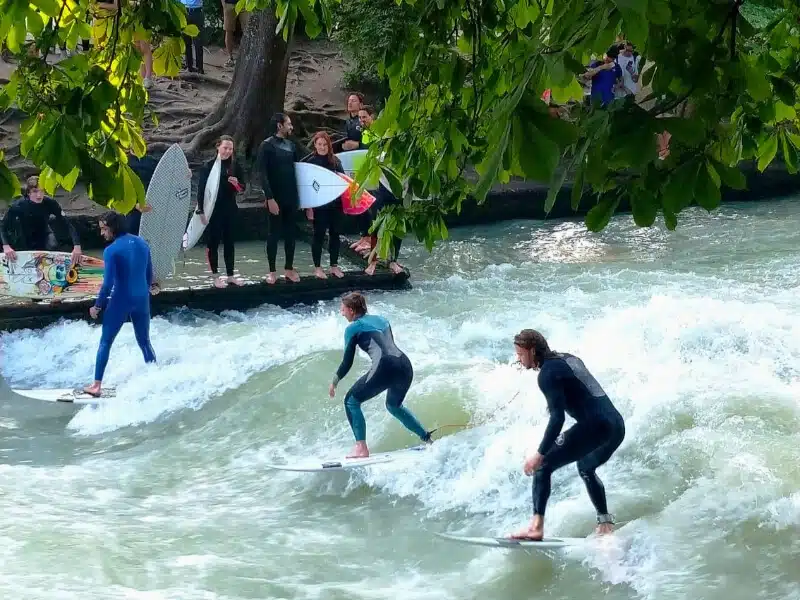
Getting to Munich
Flying
If you are flying to Munich, you will land at Franz Josef Strauß International Airport, 35km north of Munich. From Franz Josef Strauß Airport the best way to get to the city center is by train. There are several different ways to get to downtown Munich from the airport:
Are you visiting Munich as part of a longer trip? A German road trip is the best way see this beautiful country, and our guide to road tripping in Germany has all you need, including maps, routes, highlights and tips, to help you plan the perfect trip.
Where to Stay in Munich
Luxury: Louis Hotel is a chic boutique hotel located in the heart of the city, right next to the famous Viktualienmarkt. Known for its minimalist design with Parisian and Japanese influences, the hotel offers elegant rooms with modern amenities and some with stunning views of the Alps. With its central location and excellent service, Louis Hotel is ideal for travelers seeking luxury and style in Munich’s Old Town.
Mid-Range: Hotel Mio by Amano is a trendy boutique hotel located near the famous pedestrian shopping street, Sendlinger Straße. The hotel combines stylish, modern design with a vibrant, urban atmosphere and is a great choice for travelers looking for a stylish and centrally located stay in Munich.
Budget: Cocoon Senlinger Tor is a quirky, design-forward hotel offering a blend of retro charm and modern comfort. Known for its nature-inspired interiors, Cocoon features vibrant colors and a cozy atmosphere that sets it apart from traditional hotels. The hotel’s location near Sendlinger Tor gives easy access to public transport. Ideal for young travelers, couples, or those seeking an affordable yet stylish stay, Cocoon Sendlinger Tor is a fun, budget-friendly option with a unique personality.
Hostel: Wombat’s Hostel is a popular and vibrant hostel located near Munich’s central train station (Hauptbahnhof). Known for its lively and social atmosphere, the hostel attracts a mix of backpackers, solo travelers, and groups. It offers a variety of accommodation options, including dormitory-style rooms and private rooms with en-suite bathrooms making it an excellent base for budget travelers to Munich.
Are you looking for more one day city itineraries? Check out these top posts…
Berlin in One Day: Best Itinerary, Map, Tips & Guide
One Day in Venice: Best Itinerary, Map, Tips & Guide
The Best Prague One Day Itinerary + Map, Tips & Guide
One Day in Palermo: Best Itinerary, Map, Tips & Guide
Hamburg in One Day: The Best Itinerary + Map & Travel Tips
The Best of Rome in 36 Hours: Ultimate Itinerary + Map
Love it? Pin it!
